Google Nexus 9: Preliminary Findings
by Joshua Ho on November 3, 2014 1:00 PM ESTGPU Performance
Following along the same lines, we can also take a look at the GPU performance of Tegra13x in the Nexus 9. This really shouldn’t change too much though as the same GPU is used at the same maximum clock speed of 852 MHz. For those that are unfamiliar with the GPU in the Tegra K1, this is effectively a scaled-down version of their desktop Kepler GPUs.

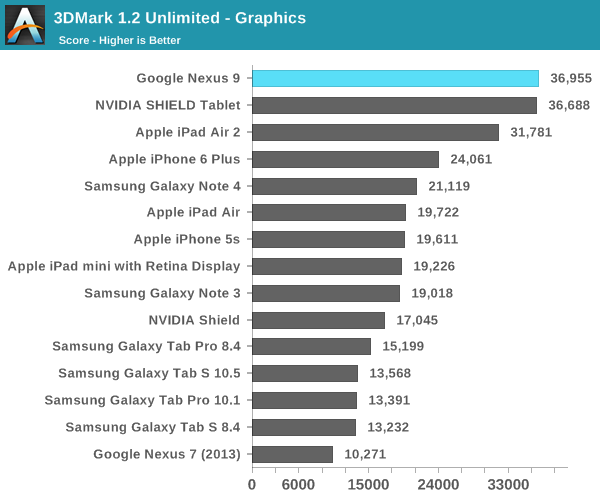
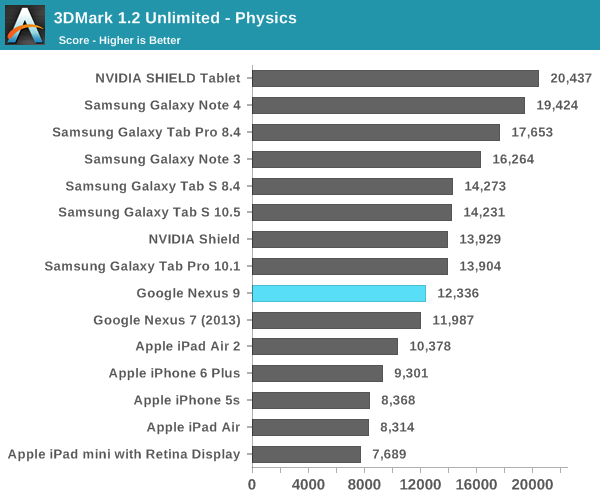
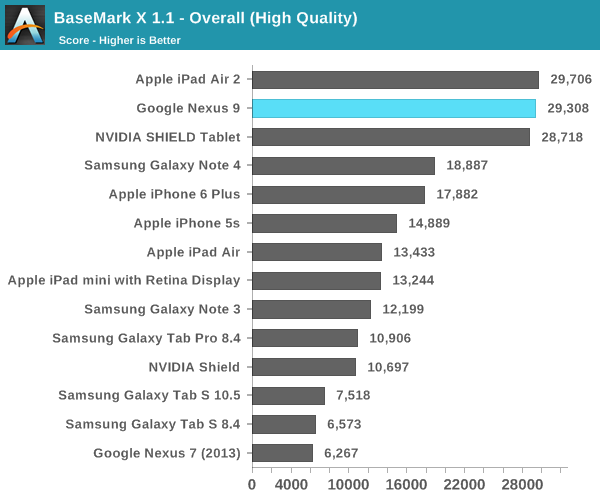
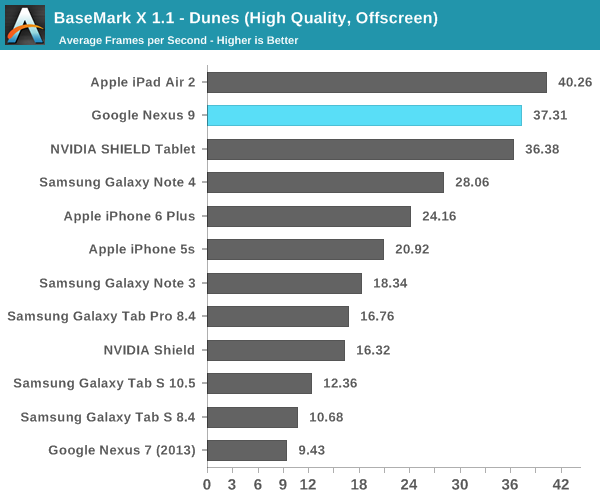
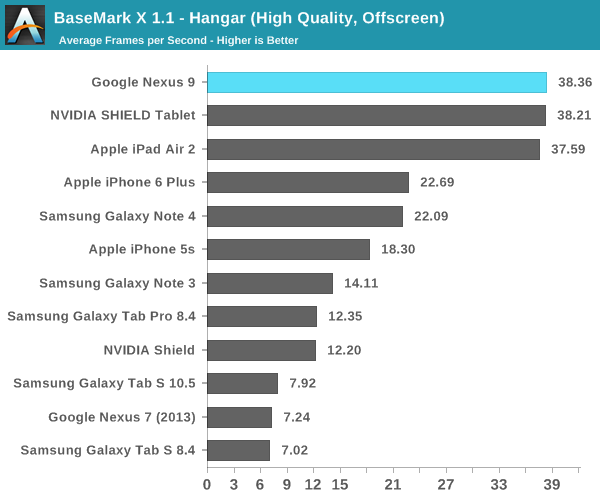
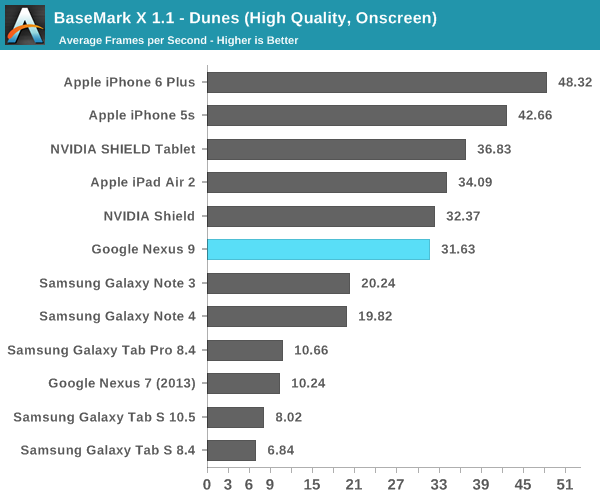

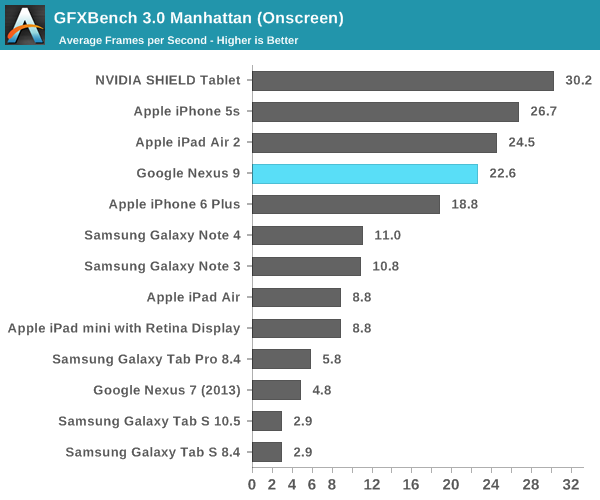
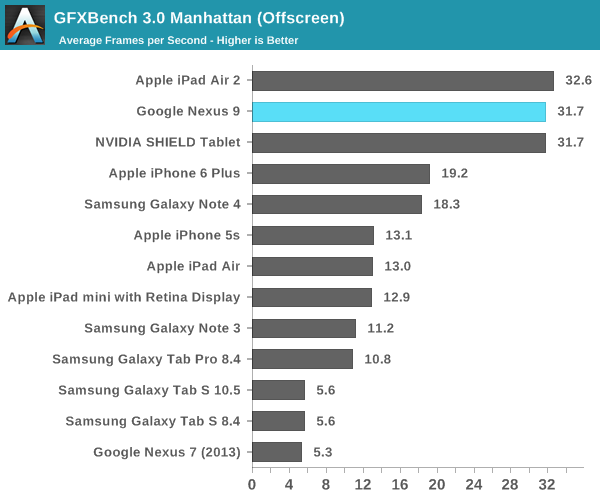
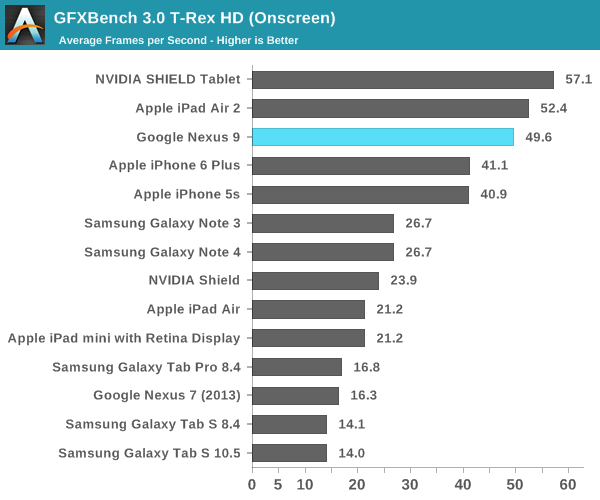
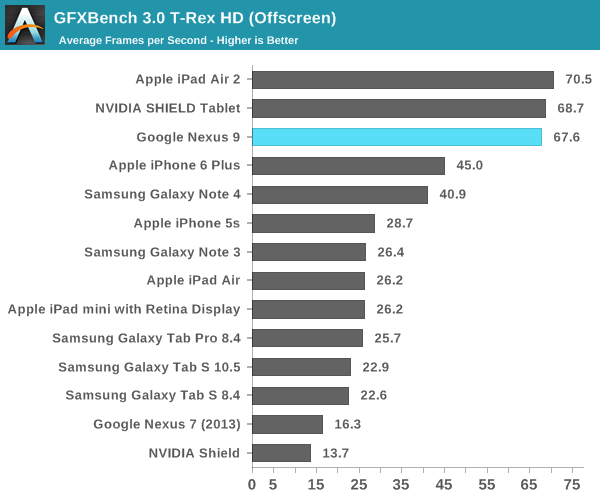
As one can see, the Nexus 9 is effectively equivalent to the SHIELD Tablet in GPU performance. The one anomaly here is 3DMark, which seems to be mostly due to differences in CPU. It's likely that this isn't representative of performance though, as 3DMark's physics test seems to perform better on CPU configurations that rely on larger numbers of cores and higher clock speeds. In the purer GPU tests like Basemark X and GFXBench performance across the board is effectively identical to the Cortex A15 variant of the Tegra K1.
Initial Conclusions
For the most part, the Nexus 9 shows some level of promise as a tablet. While Denver in NVIDIA’s Tegra K1 is a bit bimodal in performance, with sufficient optimization it has immense promise from a sheer performance aspect. While the SoC alone makes the Nexus 9 a fascinating device to look at, the rest of the package has a great deal of potential. The minimalistic design of the device, combined with good material design and stereo front-facing speakers really shows the high-end aspirations of this tablet. While we haven't received anything in the way of accessories, the keyboard folio case seems to be a way of pushing the tablet formfactor in a new direction. This is especially evident when seeing the focus on previous Nexus tablets which seemed to assume touch-only input.
While only a first look, there’s definitely a lot to be impressed by here. However, it will take a full review to really determine whether the Nexus 9 can compete with the iPad Air 2 as a tablet is more than just a function of battery life and SoC performance. In addition, it's hard to draw any real conclusions about this tablet quite yet as the software we received in no way represents a shipping build. Even if inactive, loggers and debug tools generally reduce performance, and it's likely that a great deal of optimization has occurred in the two months since this software build was completed. Once again, we haven't been able to get a newer build, but the full review should be done with shipping firmware.










146 Comments
View All Comments
tuxRoller - Thursday, November 6, 2014 - link
ipad has some pretty serious music making apps. Both have some cad programs from autodesk.Lastly, browsers themselves can actually use that power. For instance, firefox via webgl + asm.js.
This is ignoring the coming push into servers.
toyotabedzrock - Monday, November 3, 2014 - link
Not when I can buy an i5 laptop for the price of the tablet.beginner99 - Tuesday, November 4, 2014 - link
No, an i3 runs circles around A8x or Tegra K1. It's just a stupid comparison because they also target a different market.darkich - Tuesday, November 4, 2014 - link
You're trolling??The A8X is ridiculously more impressive than any Core chip because of giving comparable processing power at about 30% of power, and probably far less than 50% of price.
And here's the thing - Apple AX chips are a prime candidate for future MacBook successors.
Speedfriend - Tuesday, November 4, 2014 - link
"The A8X is ridiculously more impressive than any Core chip because of giving comparable processing power at about 30% of power, and probably far less than 50% of price."You heard of a thing called Core M? Same TDP as A8x, single core geekbench 33% higher. GPU performance 2.5x? And on silicon that is smaller than the A8 let alone the A8X, so cost of manufacture is cheaper.
darkich - Tuesday, November 4, 2014 - link
Yeah I heard of Core M, that Uber fail chip that perfectly shows how badly screwed Intel is against Apple.It throttles tragically, has 30% lower performance than a Haswell U counterpart, and costs over $200.
darkich - Tuesday, November 4, 2014 - link
^ at least that is what the first actual Core M product reveals, that ischizow - Tuesday, November 4, 2014 - link
Core M is definitely in a class of its own in terms of performance, but I agree its not applicable in this discussion because of its price tag. We won't see it in a sub $600 device competing with these parts.darkich - Wednesday, November 5, 2014 - link
Definitely in a class of its own??Please back that claim up.
From what we have seen, Core M in the Yoga 3 Pro (high end core M variant!) fails to match the Core i5 4200U, and .. Apple A8X in fact matches it in raw performance!
My bet is that Apple A9X on 14nm should allow the MacBook Air succesor to outperform windows competition in every way, and actually cost less.
darkich - Tuesday, November 4, 2014 - link
Oh and also, Core M doesn't have the same TDP as A8X, not even close!The A8X has, according to battery endurance measurements, has lower TDP than the A7..you know, the chip that runs in the iPad Air and..iphone 5S.
Think about that for a moment.
The only reason why A8X isn't in new iPhones is because the A8 is sufficient for iPhones while A8X(along with the 2GB RAM) turns the iPad into a bit more than the big iPhone.